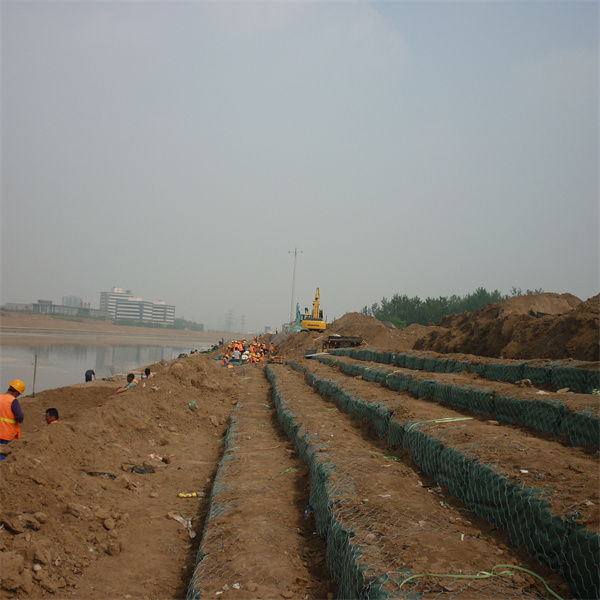નવેમ્બર . 10, 2024 22:19 Back to list
How to Effectively Fill Gabion Baskets for Maximum Stability and Strength
Filling a Gabion Basket Importance, Methods, and Considerations
Gabion baskets have garnered increasing attention in construction and landscaping due to their multifaceted applications and environmentally friendly characteristics. These wire mesh containers, which are filled with stones or other materials, offer not just structural integrity but also aesthetic appeal in various projects. Understanding how to effectively fill gabion baskets is essential for ensuring their durability and functionality.
What is a Gabion Basket?
A gabion basket is a woven mesh container typically made of galvanized steel or PVC-coated wire. When filled, they are used extensively for erosion control, creating retaining walls, sound barriers, and even decorative features in gardens. Their design allows for excellent drainage, which is crucial for preventing water accumulation and the resultant damage to structures.
Importance of Proper Filling
The filling of gabion baskets is a critical step in the construction process. Proper filling ensures structural stability, enhances aesthetics, and maximizes the longevity of the installation. Moreover, the filling material significantly impacts the functionality of the basket. For example, using poorly sized rocks can lead to shifts, while overly small materials might wash away, undermining the basket’s integrity.
Choosing the Right Filling Material
The choice of filling material for gabion baskets depends largely on the intended use. Commonly used materials include
1. Natural Stone This is the most traditional filling material. The durability and weight of natural stone provide the necessary support. When selecting stone, it’s important to choose angular-shaped pieces, as they interlock better and offer more stability compared to rounded stones.
2. Recycled Concrete This eco-friendly option is increasingly popular. Crushed concrete can fit well within the baskets while providing a robust foundation for external structures. Moreover, using recycled concrete reduces the amount of waste in landfills.
3. Gravel Fine gravel can fill small gaps between larger stones to enhance stability and minimize shifting. However, it’s crucial to ensure adequate drainage since small particles can lead to clogging.
4. Vegetation In landscape designs, filling gabion baskets with plants or planting directly within the baskets creates an attractive green façade while promoting biodiversity.
Methods of Filling Gabion Baskets
filling a gabion basket factories

Filling gabion baskets can be approached in several ways, depending on the filling material selected and the project's requirements
. Here are some effective methods1. Layering Approach Start by placing larger stones at the bottom of the basket to provide a solid base. Gradually fill the remaining space with smaller stones or aggregates. This method not only adds strength but also improves drainage.
2. Manual Filling For small projects or when the filling material is bulky, manual filling might be necessary. Workers can fill each basket by hand, ensuring stones are tightly packed and arranged for optimal stability.
3. Machine Assistance For larger projects, heavy machinery can be utilized. Excavators equipped with buckets can quickly fill several baskets, promoting efficiency. However, care should be taken to avoid damaging the wire mesh.
4. Compaction Once filled, it may be beneficial to compact the material slightly to minimize voids between stones. This can be done by lightly shaking the basket or using a compaction machine if the design allows.
Considerations for Filling Gabion Baskets
When filling gabion baskets, several factors should be taken into account
- Local Regulations Different regions may have specific environmental regulations regarding gabion structures. Always check with local authorities to ensure compliance.
- Climate Understanding the local climate can influence the choice of filling materials. For instance, in areas prone to heavy rain, ensuring proper drainage through the use of larger stones may be critical.
- Aesthetic Preferences Consider the visual impact of the chosen filling material. Different stones and aggregates can complement the overall design of the landscape or structure.
Conclusion
Filling a gabion basket is a nuanced process that requires an understanding of material choice, methods, and considerations. By properly selecting and filling gabion baskets, builders can ensure a robust, aesthetically pleasing, and environmentally friendly installation. As the demand for sustainable building practices grows, gabion baskets will remain a popular choice for both practical and decorative applications in construction and landscaping projects.
-
Understanding Load-Bearing Capacity of Gabion Boxes
NewsJul.17,2025
-
The Importance of Corrosion-Resistant Wire in Gabion Construction
NewsJul.17,2025
-
How Gabion Boxes Prevent Soil Erosion Effectively
NewsJul.17,2025
-
Environmental Benefits of Gabion Cages
NewsJul.17,2025
-
Best Stone Types for Gabion Walls with Steps
NewsJul.17,2025
-
Benefits of Using Rock Gabion Baskets in Landscaping
NewsJul.17,2025
-
The Role of Galvanized Gabion Mesh in Riverbank Protection
NewsJun.26,2025






